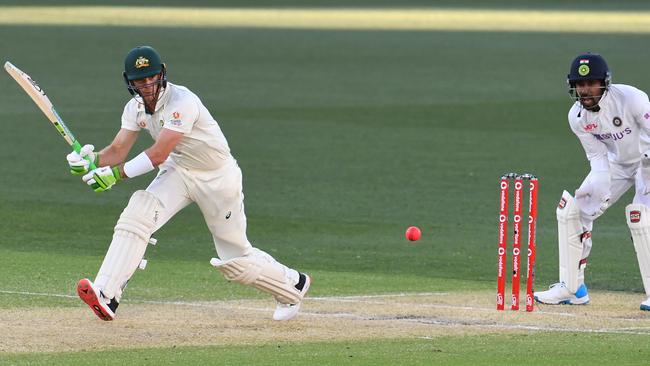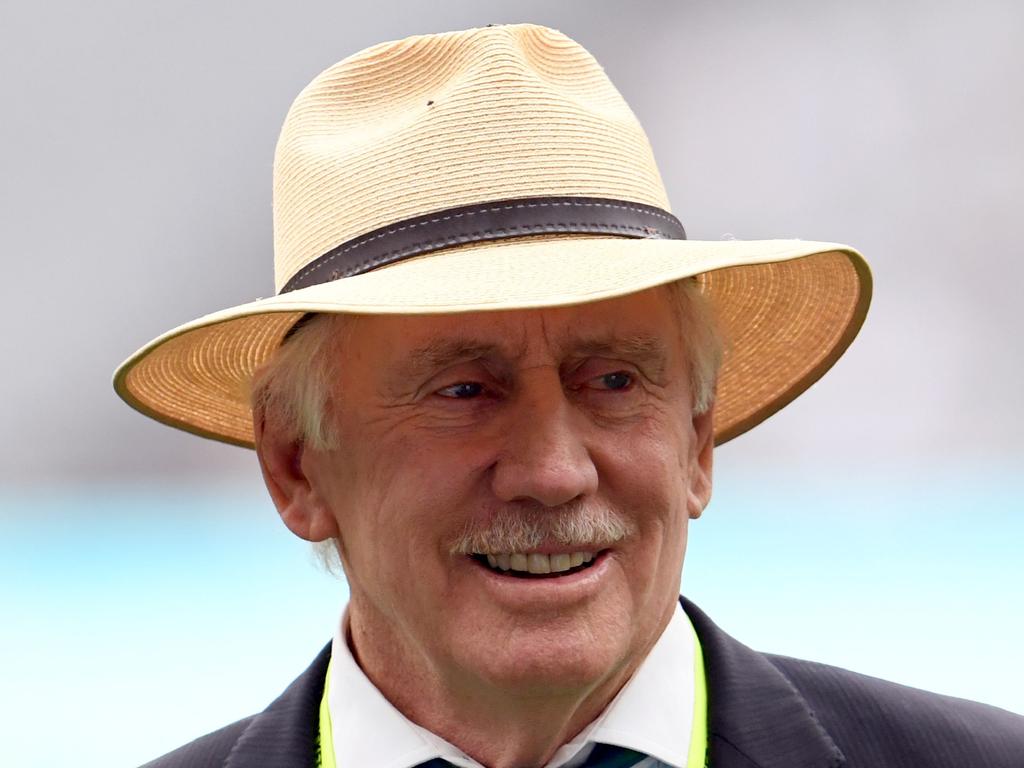Captaincy duel defines Test battle
While Tim Paine seldom looks other than a stroke player of quality, he can hardly have batted better in a Test match, going run for run with Virat Kohli.

In fact, the preliminaries for this instalment of the Border-Gavaskar Trophy have been notable for their courtesy and mutual regard, with Kohli’s truncated tour taking a further edge off the mano e mano duel.
This Adelaide Test, however, has resurrected the rivalry in a different guise. Going run for run, the pair have looked substantially the best batsmen of the first two days: Kohli’s suave 74 run out of the first day was on Friday echoed by Paine’s industrious 73 not out.
While Paine seldom looks other than a stroke player of quality, he can hardly have batted better in a Test match, coming in at five for 79, pushing through the twilight and into a cool evening, studious in defence and decisive in attack.
Australia’s captain started the season with an unbeaten 111 for Tasmania against South Australia, only his third first-class hundred; he was within sight here of a maiden Test century when the Australian innings, otherwise listless throughout, finally expired.
Some timely advice from Ian Healy last season seems to have been a spur. Healy counselled Paine to ‘bat like a number seven’ – that is, with freedom, enterprise, and maybe even insouciance.
Having spent a good proportion of his career in the top order, Healy thought, Paine may have been inhibited by the notion of batting ‘properly’. A breezy 79 in the last Boxing Day Test was the first positive outcome; Friday’s innings was a still worthier sequel, coming when runs were scarce and the game slipping away.
To that point, in fact, the Australians had played almost gravely, while losing wickets each time they deviated from the plan. Steve Smith’s 1 from 29 balls was the world’s number one batsman at his most enigmatic, perhaps incommoded by a dicky back, certainly bemused by Ravi Ashwin’s variations, and finally fending to slip.
Swapped from River to Cathedral End, Bumrah also bowled superbly, recalling his penetrative spells of two years ago.
His method by now is familiar: the quaint clip-clop in to bowl, where you imagine the soundtrack of coconut shells; the explosive leap, where the arm appears to bend like a yacht’s mylar mast and the ball harpoons back in. None have ever bowled like it, which makes him a vexing proposition: the only way to practice against Bumrah is to face him, which depends on your staying in.
Which Joe Burns, in the end, could not, for, as so often, the attempt to remedy one vulnerability exposed another. Trying to line his eyes up on off stump dragged Burns across the crease, he overbalanced to a fuller, straighter delivery, and was lbw for a careworn 8. Back to the nets, in search of fluency and inspiration.
Even Marnus Labuschagne needed some ham-handed Indian fielding to survive as long as three hours. The sight of Matthew Wade at number five, with his counterpunching strokes, would have been reassuring, but he had already been spent against the new ball.
So came Paine relief, 10 crisp boundaries including a couple of flailing square cuts, a couple of princely back foot drives and a devil-may-care reverse sweep, along with some enterprising running which cost Mitchell Starc his wicket, pressing too hard, but kept the scoreboard ticking.
A more mobile fielder than Mayank Agarwal might have cut Paine’s innings short at 26, but it was no surprise to see the ball go to ground. Perhaps time to adapt the old joke: there’s a global pandemic in this Indian team but it’s not catching.
Kohli, of course, made the hardest chance of the day, offered by Cameron Green’s miscued pull to mid-wicket, look easy. And his batting skill has been put in perspective by the difficulties other batsmen have experienced with 8mm grass, variable bounce and mattress bounce on Damien Hough’s pitch, belying its dropped in character.
But if Paine lost a little in aesthetic comparison, he lost nothing in effectiveness.
The captain’s duel will by necessity be abbreviated this summer, but it has already set a stirring tone for the series.







When India last toured Australia two years ago, one of the narratives was the emerging rivalry of Virat Kohli and Tim Paine, captured visually in their excuse-me in Perth, bellies rubbing, eyes looking this way and that. The sight has been a motif of this tour’s pre-publicity, attempting to reignite the air of confrontation.